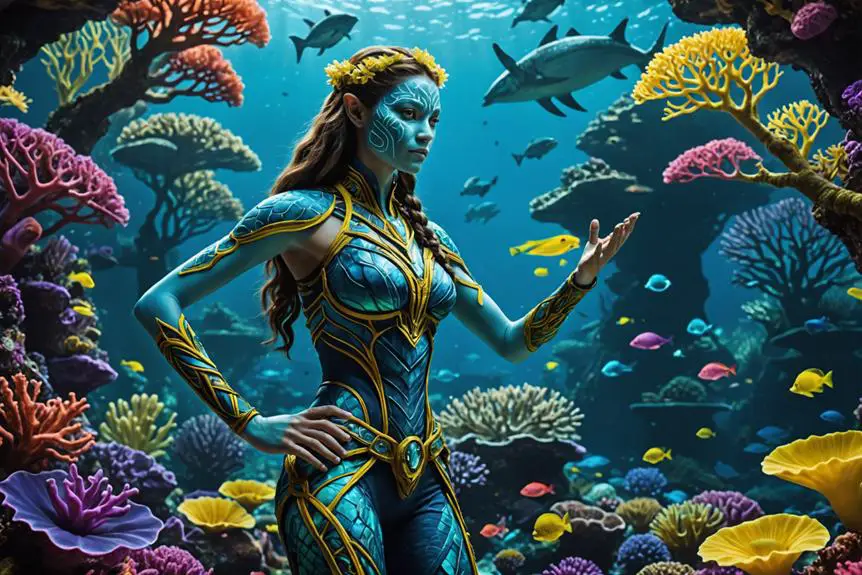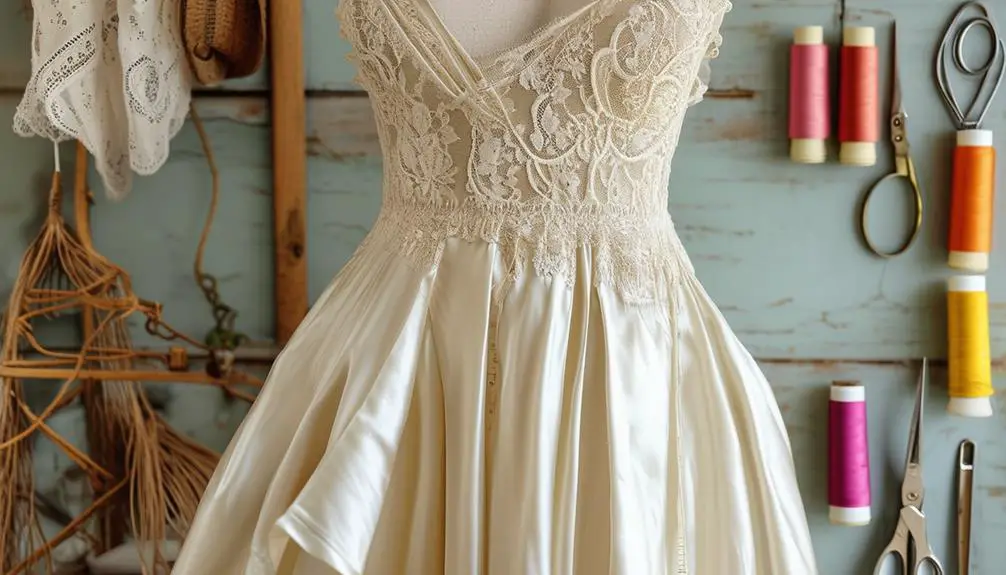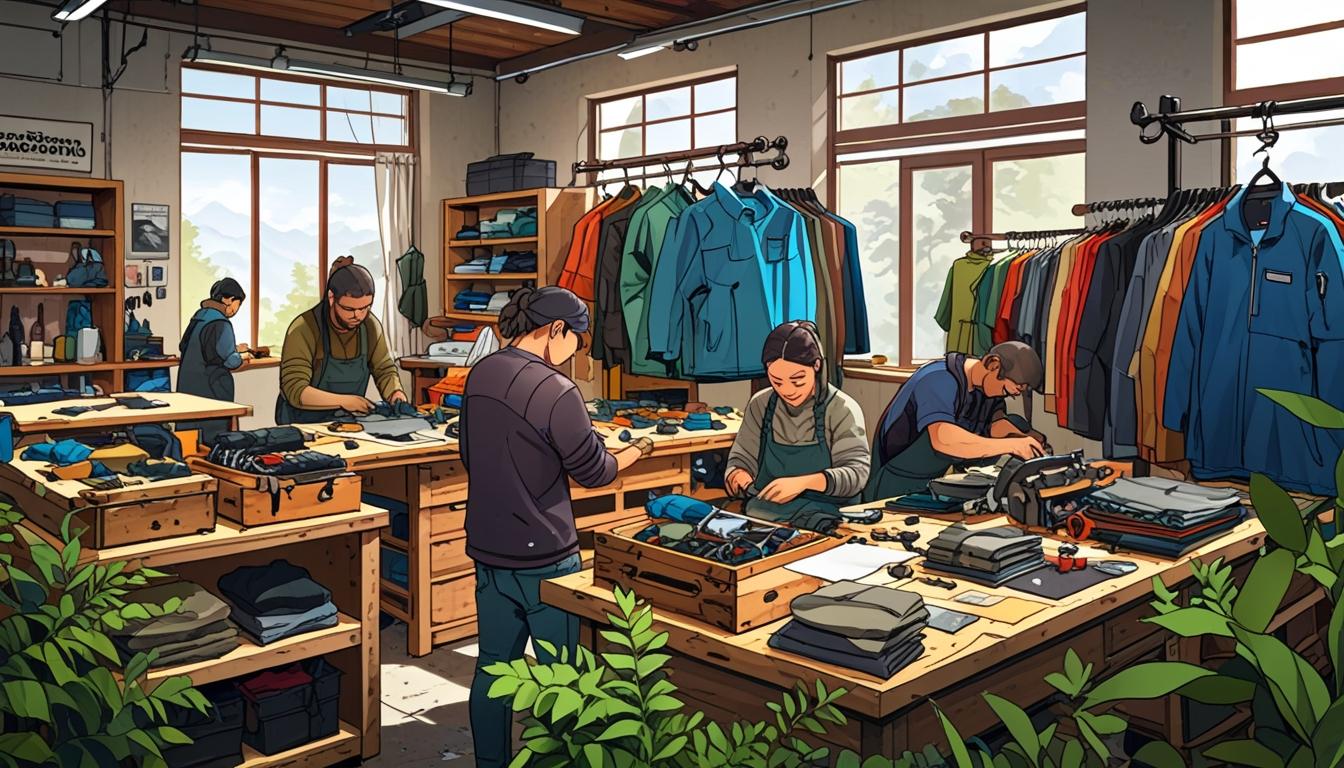When you consider "Avatar: The Way of Water," it's hard not to notice how the costumes play a vital role in conveying the film's themes. Deborah Scott's thoughtful designs reflect not just aesthetic choices but deep cultural influences, especially from Indigenous Pacific cultures. Each clan's outfit tells a story, merging character identity with environmental ties. As you explore the intricacies behind these choices, you might find yourself questioning how each element contributes to the overall narrative. What might these outfits reveal about the characters' journeys and the world they inhabit?
Costume Design Overview
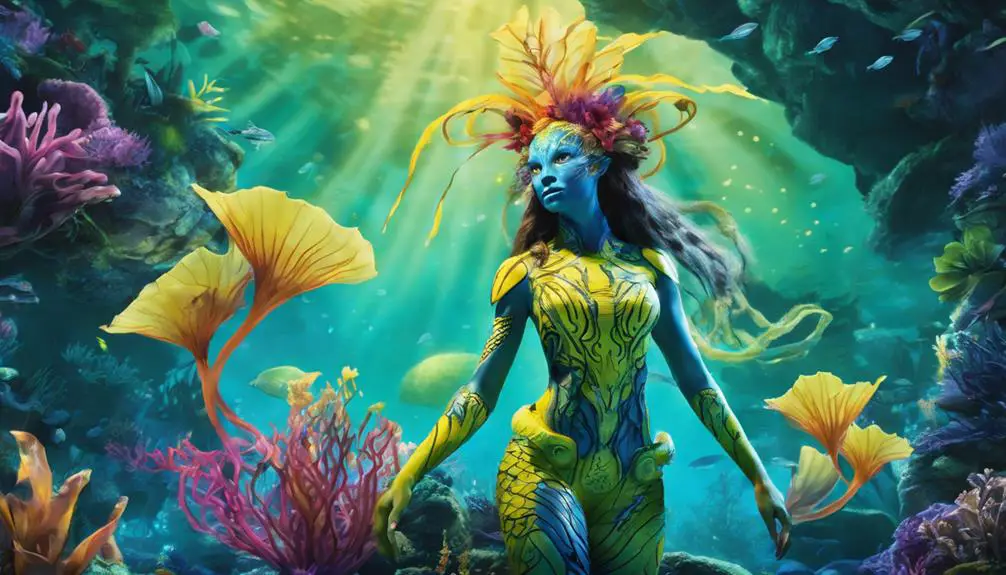
In "Avatar: The Way of Water," the costume design plays an essential role in bringing the vibrant world of Pandora to life. Costume designer Deborah Scott dedicated about five and a half to six years to this project, showcasing her passion and commitment. You'll notice that the costumes for the Na'vi characters are bursting with high-contrast colors and unique textiles, which not only reflect their cultural identity but also immerse you in their lush environment.
Scott's approach involved extensive research on indigenous cultures, particularly drawing inspiration from Polynesian influences. This meticulous study informed the design of costumes for the Metkayina clan, emphasizing the use of natural materials like hides and shells. You can really see how these elements enhance the authenticity of the characters, making them feel more connected to their surroundings.
What's truly fascinating is the collaboration between costume designers and digital artists. They created digital representations of the costumes through virtual fittings, ensuring that each piece looked realistic in the film's stunning underwater settings. This innovative approach highlights the dedication to detail that Scott and her team brought to the project.
Deborah Scott's hard work hasn't gone unnoticed; her recognition includes a CDGA nomination and a Career Achievement Award. All these elements combined make the costume design in "Avatar: The Way of Water" not just visually striking, but also deeply resonant with the story and characters, enhancing your experience of this breathtaking cinematic journey.
Cultural Influences on Costumes
Drawing from a rich tapestry of Indigenous cultures, the costume design in "Avatar: The Way of Water" vividly reflects the lifestyles and environmental interactions of communities in Fiji, Tonga, Samoa, Hawaii, and among the Māori of New Zealand. Costume designer Deborah L. Scott meticulously studied these cultures, ensuring that each outfit not only tells a story but also honors the traditions and connections of these people to their surroundings.
Take the Metkayina clan, for example, whose costumes emphasize aquatic elements, incorporating natural materials like shells and seagrass. These choices demonstrate a profound connection to their marine environment, highlighting how their attire reflects the water-based lifestyle they lead. Scott's extensive research into indigenous peoples living near water has provided a rich context for the costumes, focusing on cultural significance and identity through clothing.
The distinct environments of the Omatikaya and Metkayina clans are showcased through thoughtful design choices, where color, structure, and materials vary drastically. While the Omatikaya embrace the lush forest, the Metkayina's reef-inspired outfits resonate with the vibrant underwater world. By using real natural materials such as hides and shells, Scott adds authenticity and cultural respect to the costumes, enhancing the overall storytelling of the film. This deep cultural influence not only enriches the visual experience but also fosters a greater understanding of the interconnectedness between people, culture, and environment, making "Avatar: The Way of Water" a truly immersive cinematic adventure.
Clan-Specific Outfit Details
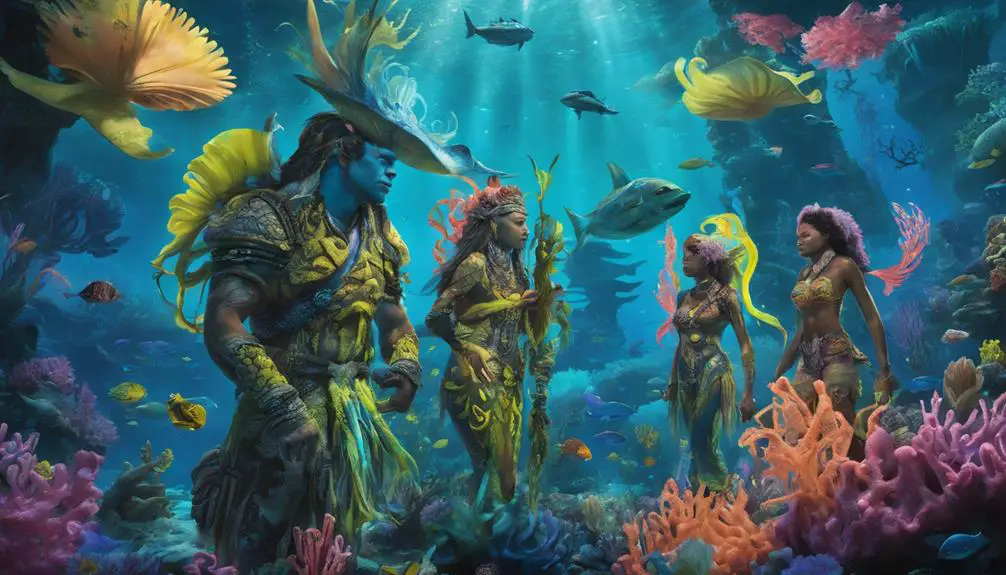
Costume design in "Avatar: The Way of Water" showcases the intricate relationship between culture and environment, with each clan's outfits telling a unique story. The costume designers have meticulously crafted attire that reflects the distinct lifestyles and values of the Omatikaya and Metkayina clans. For instance, the Omatikaya clan's costumes are adorned in earthy tones and natural materials, embodying their forest-dwelling heritage. Each stitch and fabric choice connects the Indigenous people to their lush surroundings, emphasizing their deep-rooted traditions.
In contrast, the Metkayina clan embraces the ocean, incorporating aquatic elements into their outfits. You'll notice shells and marine-inspired designs that signify their symbiotic relationship with the water. This thoughtful design choice not only showcases their cultural identity but also highlights how the environment shapes their way of life.
Specific costume pieces within each clan carry significant meaning. Take Tonowari's toa guard, for example, which symbolizes protection and leadership, reinforcing the importance of status within their community. Similarly, Neytiri's necklace serves as a poignant reminder of her emotional ties to the forest, illustrating how personal connections to the environment are reflected in their attire.
Character Symbolism Through Attire
Attire in "Avatar: The Way of Water" serves as a powerful narrative device, revealing deep character connections and their evolving identities. Each character's costume not only enhances their visual identity but also symbolizes their emotional ties to their surroundings and heritage. For instance, Neytiri's necklace embodies her profound connection to her forest home, highlighting her identity and cultural roots. This piece of jewelry is more than an accessory; it's a demonstration of her heritage and the love she holds for her land.
Kiri's costume, resembling a charm bracelet, further emphasizes her free spirit and affinity for nature. Each charm reflects her unique traits, showcasing her individuality within the clan. On the other hand, Jake's evolving attire signifies his journey of adaptation and respect for the reef culture, illustrating his integration within the Metkayina clan. This transformation in costumes marks his commitment to understanding and embracing a new way of life.
The Omatikaya clan's costumes, adorned with earthy tones and forest-inspired elements, strengthen their connection to the natural world, emphasizing their cultural identity. Finally, Tonowari's toa guard costume symbolizes leadership and strength, representing his role within the Metkayina clan. These costumes serve as visual metaphors, enriching the narrative and highlighting the intricate connections between characters and their environments. Through their attire, the characters not only express their identities but also weave together the rich tapestry of their cultural heritage, creating a vibrant and engaging story.
Technical Challenges in Creation
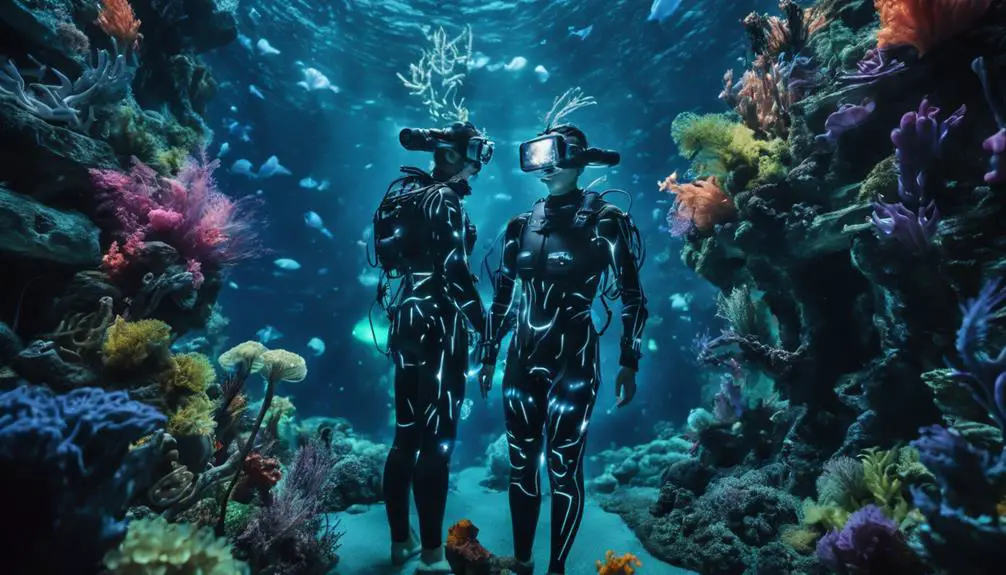
Creating the stunning visuals in "Avatar: The Way of Water" involved overcoming significant technical challenges, especially with most of the film set underwater. The underwater environment demanded a fresh approach to costume design, as the movement and behavior of garments in water differ dramatically from that on land. Costume designers undertook behind-the-scenes practices, like bringing various fabrics underwater to study how they flow and shift, guaranteeing they could replicate these effects in a virtual world. Understanding the properties of different materials, including their elasticity and moisture absorption, was essential in selecting fabrics that would perform well underwater, much like the care needed for vintage wool garments.
Tailoring costumes for the towering nine-foot-tall Na'vi characters added another layer of complexity. Designers had to carefully consider not just the aesthetics but also the functionality of the materials, making sure that the garments moved naturally with the actors. This attention to detail was critical for achieving a realistic portrayal of these characters.
Digital artists played a significant role in this endeavor, using extensive virtual fittings to align the physical designs with the digital versions worn by the actors. They meticulously tested each garment, which was fundamental to inform animators about fabric behavior, particularly how it interacts with water dynamics. By addressing these technical challenges head-on, the creative team guaranteed that every detail, from the shimmer of a costume in the sunlight to how it billowed in the waves, contributed to the immersive experience of the film. The result is a breathtaking visual feast that pushes the boundaries of filmmaking technology while bringing the world of Pandora to life.
Practical Applications for Actors
In "Avatar: The Way of Water," actors wore specially designed physical costumes by Deborah L. Scott, which played a significant role in understanding the unique movement and performance dynamics of their characters. These costumes weren't just for show; they were meticulously crafted to enhance the actors' performances, allowing them to feel the weight, texture, and fit of their characters' attire. This tangible experience enabled you, as an actor, to interact more naturally within the breathtaking virtual world of Pandora. The attention to detail in costume design parallels the importance of evaluating fit and making adjustments in clothing, guaranteeing comfort and visual appeal. Additionally, tailoring techniques for unique styles were considered to maintain the integrity of the costumes while enhancing character portrayal.
Additionally, reference garments with tracking markers were created to assist in performance capture, making certain that your movements were accurately represented in the digital domain. The integration of these physical costumes with performance capture suits provided essential feedback on fit and movement, which is critical for a believable character portrayal. This careful design process allowed you to embody your character fully, rather than just performing in a void.
Working closely with Weta FX, designer Deborah L. Scott guaranteed that the physical costumes aligned perfectly with the digital designs, maintaining consistency and authenticity. This collaboration meant that you could confidently immerse yourself in your role, knowing that every detail was accounted for, both on set and in the final visual effects. Ultimately, the practical applications of these costumes were a game-changer, helping actors like you connect deeply with their characters, making the world of "Avatar: The Way of Water" come alive in a truly remarkable way.
Digital Integration in Design

Through the seamless blend of digital technology and traditional craftsmanship, "Avatar: The Way of Water" achieved a new level of realism in costume design. The film's creators took full advantage of digital integration to enhance the authenticity of the costumes, allowing them to create their clothing in ways that were previously unimaginable. Here are three key factors that showcase this innovative approach:
- Detailed Scanning: Using advanced scanning techniques, the design team captured intricate details of fabrics and textures, guaranteeing that every stitch and weave was represented accurately.
- Virtual Fitting: The team conducted virtual fittings and simulations, allowing them to observe how costumes moved with the characters, especially in water. This attention to detail guaranteed that the garments looked and felt natural in action.
- Collaboration with WED Digital: Working with WED Digital enabled the costume designers to map textures and colors precisely, integrating the costumes seamlessly with the film's stunning visual effects.
This digital artistry transformed traditional methods, blending physical craftsmanship with innovative techniques. By accurately reflecting the unique properties of fabrics, the integration of digital elements not only enhanced the costumes but also contributed to a more immersive storytelling experience. Viewers feel the magic of Pandora more intensely, allowing them to connect with the characters on an emotional level. The digital advancements in costume design for "Avatar: The Way of Water" set a new standard, demonstrating how technology can elevate artistry in film.
Awards and Recognition for Costumes
Costume design in "Avatar: The Way of Water" has truly captured the industry's attention, earning accolades and recognition that highlight its exceptional craftsmanship and creativity. At the forefront of this recognition is Deborah L. Scott, the brilliant costume designer whose extensive experience shines through the film's intricate wardrobe. Scott, previously awarded an Oscar for her work on "Titanic," recently received the prestigious Costume Designers Guild Career Achievement Award for her outstanding contributions to this visually stunning sequel.
The meticulous craftsmanship behind the costumes has not only impressed audiences but also garnered significant praise for its detail and cultural authenticity. Each outfit reflects the film's rich narrative and the diverse backgrounds of its characters, immersing viewers in the underwater world of Pandora. The innovative approach to costume design, which seamlessly blends traditional techniques with digital artistry, has set new standards in the industry, allowing for a breathtaking visual experience.
Moreover, Scott's work has been recognized through various nominations, including a CDGA nomination, illustrating the profound impact her designs have on the film's visual storytelling. This recognition serves as a demonstration of the importance of costume design in filmmaking, enhancing character development and enriching the overall narrative. As "Avatar: The Way of Water" continues to make waves, it's clear that Deborah Scott's dedication and creativity are key elements that elevate the film to new heights, making it a landmark achievement in cinematic history.
Frequently Asked Questions
Are There Any Inappropriate Scenes in Avatar: the Way of Water?
Yes, "Avatar: The Way of Water" contains intense scenes that might not be suitable for all viewers. Its cultural representation and visual storytelling include emotional themes and conflicts that could be distressing for sensitive audiences.
How Do the NA Vi Make Their Clothes?
The Na'vi create their clothes using natural materials, employing traditional crafting techniques like weaving and braiding. Their textiles reflect a deep connection to nature while showcasing clan identity and cultural heritage through design and color.
Do They Wear Clothes in Avatar?
Yes, they wear clothes in Avatar. Na'vi fashion reflects their cultural significance, featuring vibrant colors and natural materials. These garments symbolize clan identity and enhance their connection to the environment, showcasing their unique heritage.
What Were the Inspirations for the Avatar Movie Franchise Costumes?
The costume design in the Avatar franchise draws from diverse cultural influences, incorporating elements from Indigenous cultures. You'll notice how each character's attire reflects their environment, lifestyle, and unique traits, enhancing the film's authenticity and depth.
